Table of Contents
AIRMATIC Mercedes Problem: Diagnosing and Fixing a Faulty Suspension on the GL500
The Mercedes-Benz GL 500 is a luxury SUV that blends power, comfort, and advanced technology. A key part of its smooth ride comes from the AIRMATIC air suspension system, which automatically adjusts ride height and damping to road conditions. However, when the system develops faults, symptoms such as uneven ride height, sagging on one side, or warning messages can appear.
One of the most common issues reported by owners is the “AIRMATIC Mercedes problem”, which can range from minor leaks to complete suspension failure.
This case study explores how a Mercedes GL 500 with a suspension drop on the right side was diagnosed, repaired, and restored to full performance.
Customer Complaint
- – Vehicle: Mercedes-Benz GL 500
- – Symptom: Faulty suspension and a noticeable drop on the right side
The owner reported that the right side of the vehicle sat visibly lower than the rest, creating discomfort and raising safety concerns.
Step-by-Step Repair Process
Step 1: Visual Inspection
The first step in resolving an AIRMATIC Mercedes problem is a thorough inspection. In this case, the GL 500 clearly leaned to the right. A check of air springs, hoses, and connectors revealed no immediate external damage, but the visible drop strongly suggested an air leak or internal suspension failure.
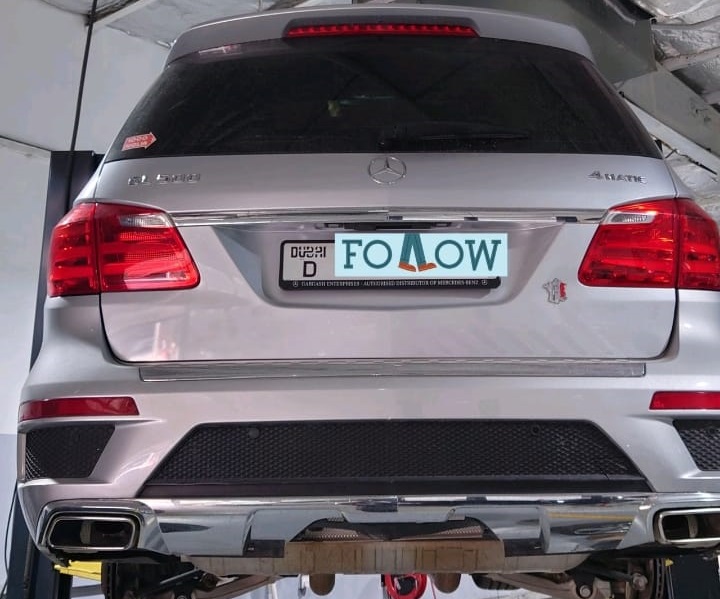
Step 2: Diagnostic Scan
Using Xentry Diagnostics, the suspension control unit was scanned for fault codes.
=> Results:
- – Heavy air leakage detected in the rear right air spring (“air balloon”).
- – Minor leakage in the left rear spring, indicating both were nearing failure.
This confirmed the root cause: worn rear air springs.

Step 3: Estimation & Customer Approval
An estimate was prepared to replace both rear air springs using OEM Mercedes parts. Replacing in pairs is crucial for balanced suspension performance and longevity. The estimate also included:
- – Labor costs
- – Calibration service
- – Diagnostic clearing
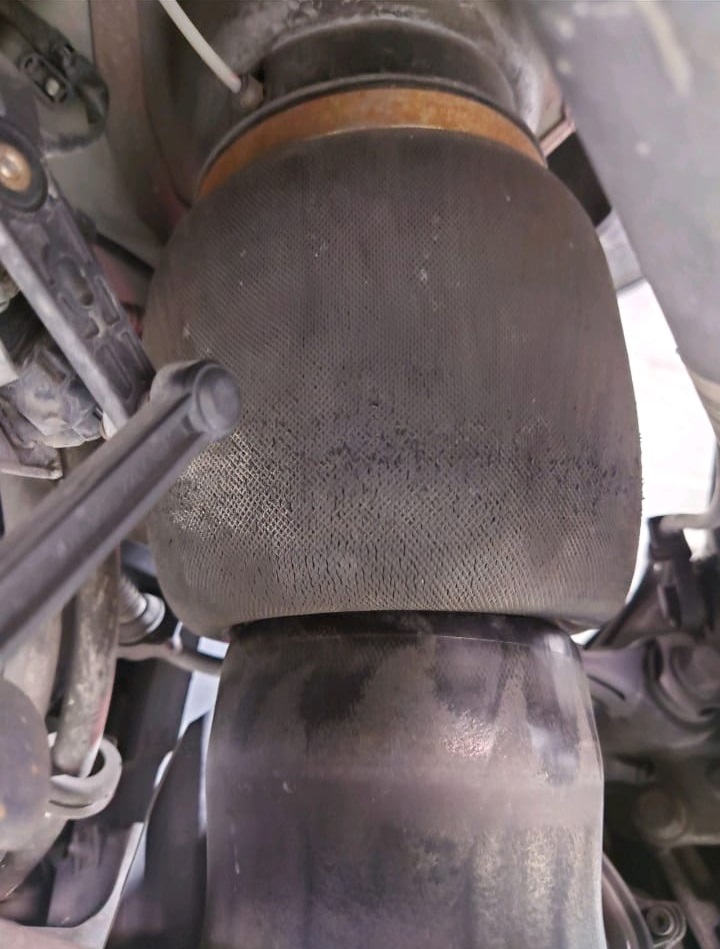
Step 4: Parts Procurement
Original Mercedes air springs were sourced. Using genuine parts ensures compatibility, proper ride quality, and long-term reliability especially critical for AIRMATIC systems.
Step 5: Replacement Process
The faulty air springs were carefully removed and replaced with new ones. The process involved:
- 1. Depressurizing the air suspension system.
- 2. Disconnecting airlines and electrical connectors.
- 3. Removing the leaking air springs.
- 4. Installing and securing new OEM springs.
Note: Precision is key, as improper installation can damage surrounding suspension components.
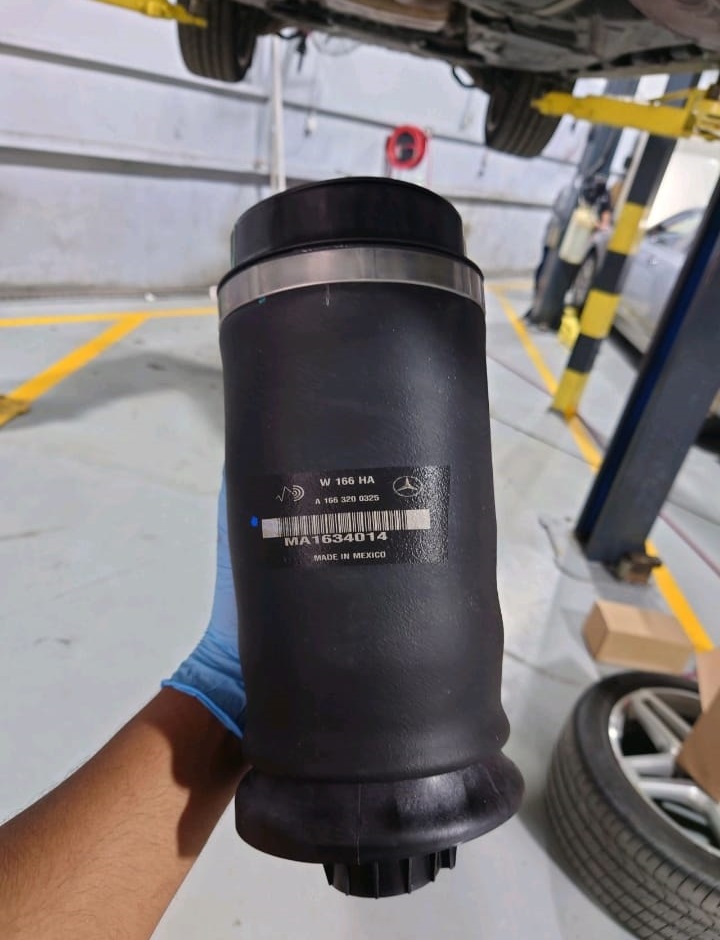
Step 6: Calibration
After replacement, the suspension was recalibrated using Xentry:
- – Ride height sensors adjusted.
- – Control module programmed to recognize the new components.
- – System tested for correct air distribution.
Step 7: Quality Check & Test Drive
- – All fault codes cleared.
- – Vehicle taken for a test drive.
- – Results: Suspension held level, no leaks detected, no warning lights returned.
The AIRMATIC Mercedes problem was fully resolved, and the GL 500 regained its smooth, level ride.
Symptom –> Cause –> Fix Table
| Symptom | Likely Cause | Repair Solution |
|---|---|---|
| Vehicle leaning on one side | Leaking air spring | Replace air springs, recalibrate ride height |
| Dashboard “AIRMATIC malfunction” | Faulty ECU or sensor | Scan for codes, reset or replace component |
| Compressor constantly running | Air leak in springs or lines | Inspect system, replace leaking parts |
| Rough or bumpy ride | Failed dampers or valve block | Replace dampers, check valve block |
| Suspension won’t rise after start | Compressor failure or relay fault | Replace compressor/relay, recheck wiring |
Related Diagnostic Resource
If your Mercedes is showing electrical or suspension-related warnings, explore our complete troubleshooting hubs:
Mercedes Electrical Problems: Fix SAM, ECU & CAN Bus Faults; learn how to diagnose power supply loss, short circuits, and CAN communication errors affecting your vehicle’s control modules and wiring systems.
Mercedes-Benz Suspension Issues: Symptoms, Causes & Fixes; discover how to identify and repair AIRMATIC, ADS, and level-sensor faults, including electrical causes and calibration tips.
Together, these resources provide a complete diagnostic roadmap from module voltage and communication faults to suspension performance and ride-height regulation issues.
Why Does the AIRMATIC System Fail?
The AIRMATIC Mercedes suspension is complex and relies on many interconnected parts. The most common causes of failure include:
- – Air spring wear: Rubber components crack or leak over time.
- – Compressor overuse: Continuous operation due to leaks eventually burns it out.
- – Valve block issues: Blockages or malfunctions disrupt air distribution.
- – Sensor errors: Height sensors send incorrect data, causing uneven ride.
- – Electrical faults: Wiring or ECU failures trigger warning lights.
How to Reset AIRMATIC Mercedes
Sometimes minor issues or incorrect height settings can be resolved by a system reset.
Reset Guide:
- 1. Park safely on a flat surface, engage the parking brake.
- 2. Turn ignition to position II (do not start engine).
- 3. Access suspension settings via dashboard/infotainment.
- 4. Set suspension to normal height.
- 5. Press and hold the AIRMATIC button on the console for 5–10 seconds.
- 6. Wait while the system recalibrates.
- 7. Turn off ignition for 30 seconds.
- 8. Restart engine and check for warnings.
- 9. Take a short test drive to confirm normal operation.
FAQs: AIRMATIC Mercedes Problem
Q: How long do Mercedes AIRMATIC air springs last?
A: Typically 6–10 years or 80,000–100,000 miles, depending on usage.
Q: Can I drive with a bad AIRMATIC suspension?
A: It’s possible, but not safe. Faulty suspension reduces stability, increases braking distance, and can damage other components.
Q: Should I replace one air spring or both?
A: Always replace in pairs (left and right) for balance and safety.
Q: How much does it cost to repair AIRMATIC suspension?
A: Replacing an air spring can cost $800–$1,500 per unit. Full system repairs (springs, compressor, valve block) may exceed $3,000.
Q: Can I reset AIRMATIC at home?
A: Yes, for minor calibration issues. But persistent leaks or compressor faults require professional diagnostics.
Conclusion
The AIRMATIC Mercedes problem on the GL 500 demonstrates how vital it is to diagnose suspension issues early. In this case, a sagging right side was traced to failing rear air springs. By replacing both springs, recalibrating the system, and conducting thorough testing, the vehicle’s luxury ride quality was fully restored.
For Mercedes owners, the lesson is clear: address suspension warnings immediately. Prompt repairs not only restore comfort but also prevent further damage and costly repairs. With genuine parts and professional service, your Mercedes can continue to deliver the smooth, confident drive it was designed for.
Author
Written by Mercedes Expert
With years of hands-on experience diagnosing and repairing Mercedes-Benz systems, he brings technical depth and practical case studies to help car owners, technicians, and enthusiasts troubleshoot complex automotive issues. His work focuses on clear repair guides, OEM-level procedures, and knowledge-sharing to empower both professionals and drivers.
Last Updated: November 2025

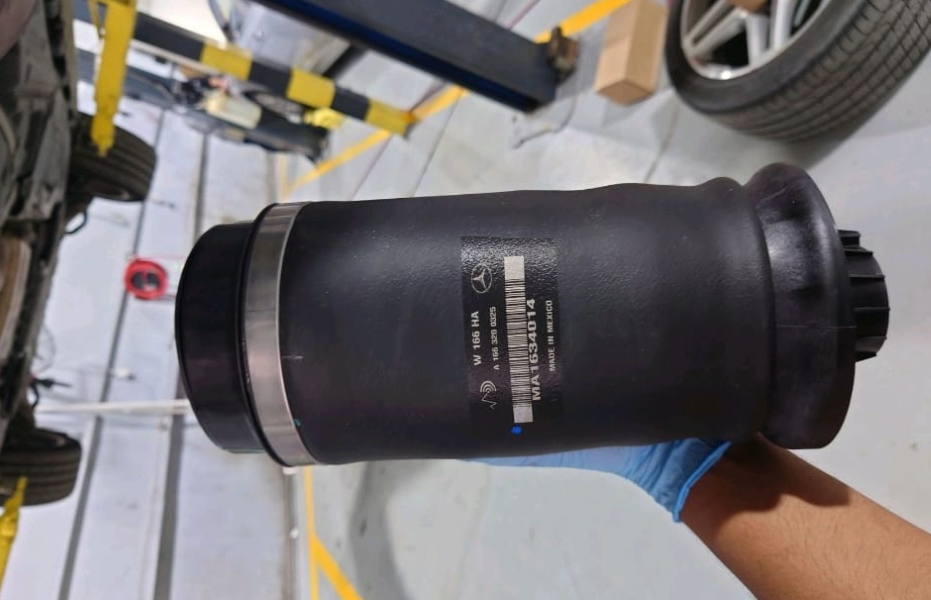
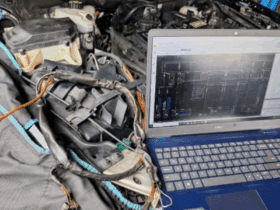



It’s actually a nice and helpful piece of information. I am glad that you simply shared
this helpful info with us. Please stay us informed like this.
Thank you for sharing.